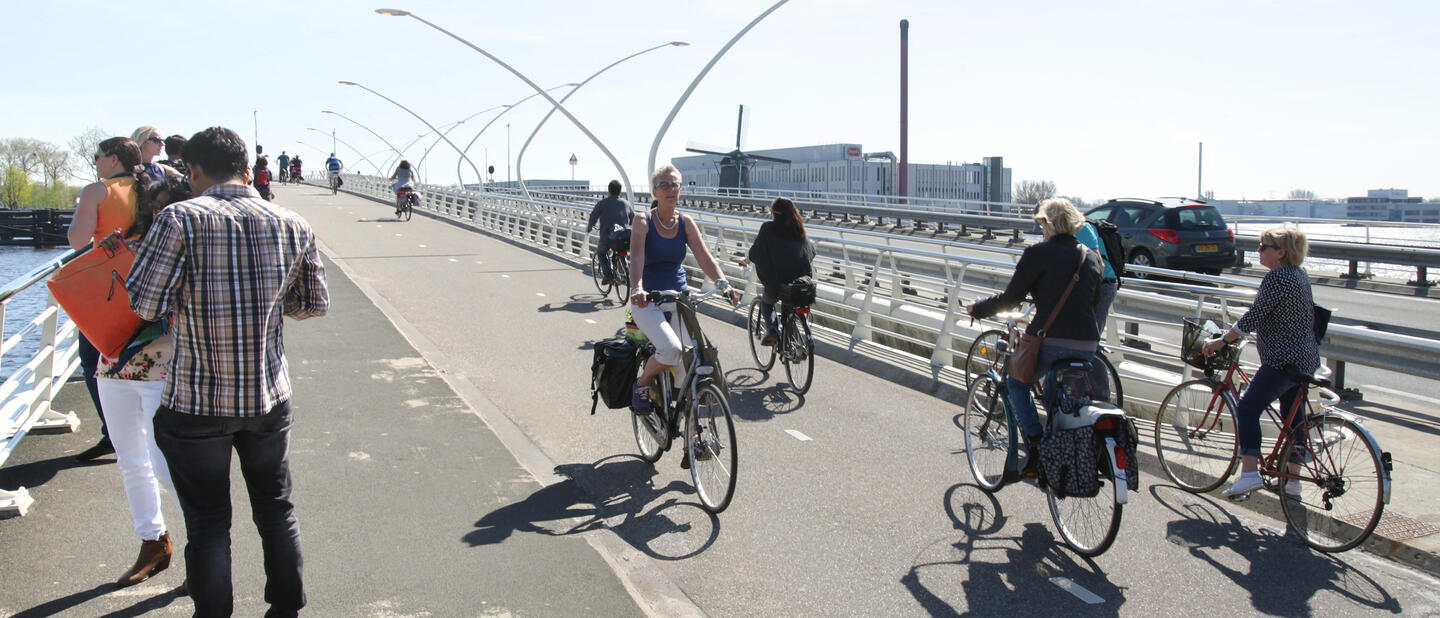
When you bring in our expertise, you can count on thorough research and tangible results. Substantiated research and trend reports and effective interventions aimed at encouraging safe behaviour in a safe environment. Programmes that positively encourage people to develop safe habits, customised for different target groups. So that safe behaviour becomes the norm.
Knowledge with an impact
Working with VeiligheidNL provides you with a number of unique advantages:
- We use our own national accident register: the Dutch Injury Surveillance System (DISS). This system consists of a continuous data collection from Emergency Departments of a representative number of hospitals;
- Continuous research into injuries and how they occur;
- In-depth knowledge of what motivates people to change their behaviour;
- Experts who know how accidents can be prevented;
- Demonstrated success in developing and implementing effective programmes;
- Strong national and international network of partners, for instance in relation to injury registration in Europe.
Preventing accidents together
In order to increase our impact, we join forces with businesses, government, police, schools, healthcare providers, industry associations and experts. Together we work on safety and reduce the number of injuries in the Netherlands. We do this for government agencies and on a subsidised basis, but we also perform contract funded projects for businesses or sector organisations.
Monitoring and Research
Research provides the basis for everything we do. Sometimes this involves focused research for one of our clients. We also conduct national monitoring in which we constantly collect information and perform analyses.
Our key source of knowledge is the Dutch Injury Surveillance System (DISS). Since 1997, Emergency Departments (ED’s) at a reliable sample of Dutch hospitals have been constantly providing our database with the latest information on injuries and poisoning cases they treat. What exactly is the problem? Does the patient need to be hospitalised? How did the injury occur? And where did it happen?
We combine the valuable data from DISS with other sources. We chart out trends over time, in risk groups and in accident causes and effects, and lay the foundation for prevention policy. Locally, regionally and nationally. Every year, you can find the most important figures and developments in new reports and fact sheets.
Focused research
If you have questions about a particular type of injury and the related causes and effects, our specialists can often provide good answers to these questions based on data already collected. For more in-depth research into specific injury problems and risk factors, it may be necessary to conduct supplementary research. If you want to know more about the effectiveness of behavioural interventions or about target groups’ perception, needs and behaviour, we can also investigate that for you. Both quantitatively (via online surveys, for instance) and qualitatively (via focus groups and observation, for instance).
Injury Cost Model
We worked with Erasmus MC to develop the Injury Cost Model. This enables us to calculate the actual costs of an injury, wound or poisoning. Not only in monetary terms (the costs of treatment and absence from work, for instance), but also in terms of quality of life. The Injury Cost Model allows us to create business cases and cost-benefit analyses for you, and investigate the effectiveness of our programmes.
European cooperation
We are a member of Eurosafe, the European Association for Injury Prevention and Safety Promotion, in which government agencies, umbrella organisations and businesses all participate. Eurosafe organises an international conference on injury prevention and safety promotion once every two years.
We also collaborate with some 25 European partners in the IDB, the European Injury Database. In this network, agreements are made at European level on standardised injury data collection, and data are analysed and incorporated in reports. We supply data from the DISS injury information system to the IDB annually, making it an important pillar of the IDB. If you are interested in injury data at a European level, for example in the context of product safety, you can contact us. VeiligheidNL is a foundation with the status of a public benefit organisation and does not have a profit motive.
Meld je aan voor onze e-mail updates om op de hoogte te blijven.
